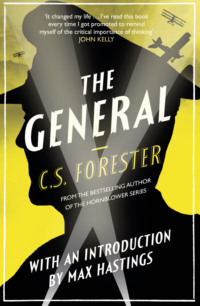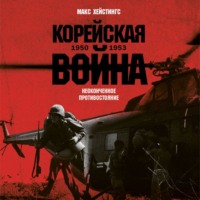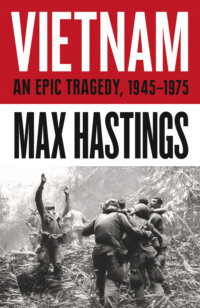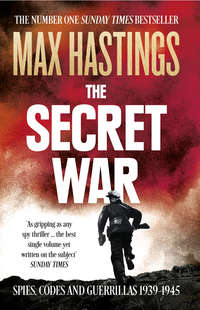
Полная версия
Chastise: The Dambusters Story 1943

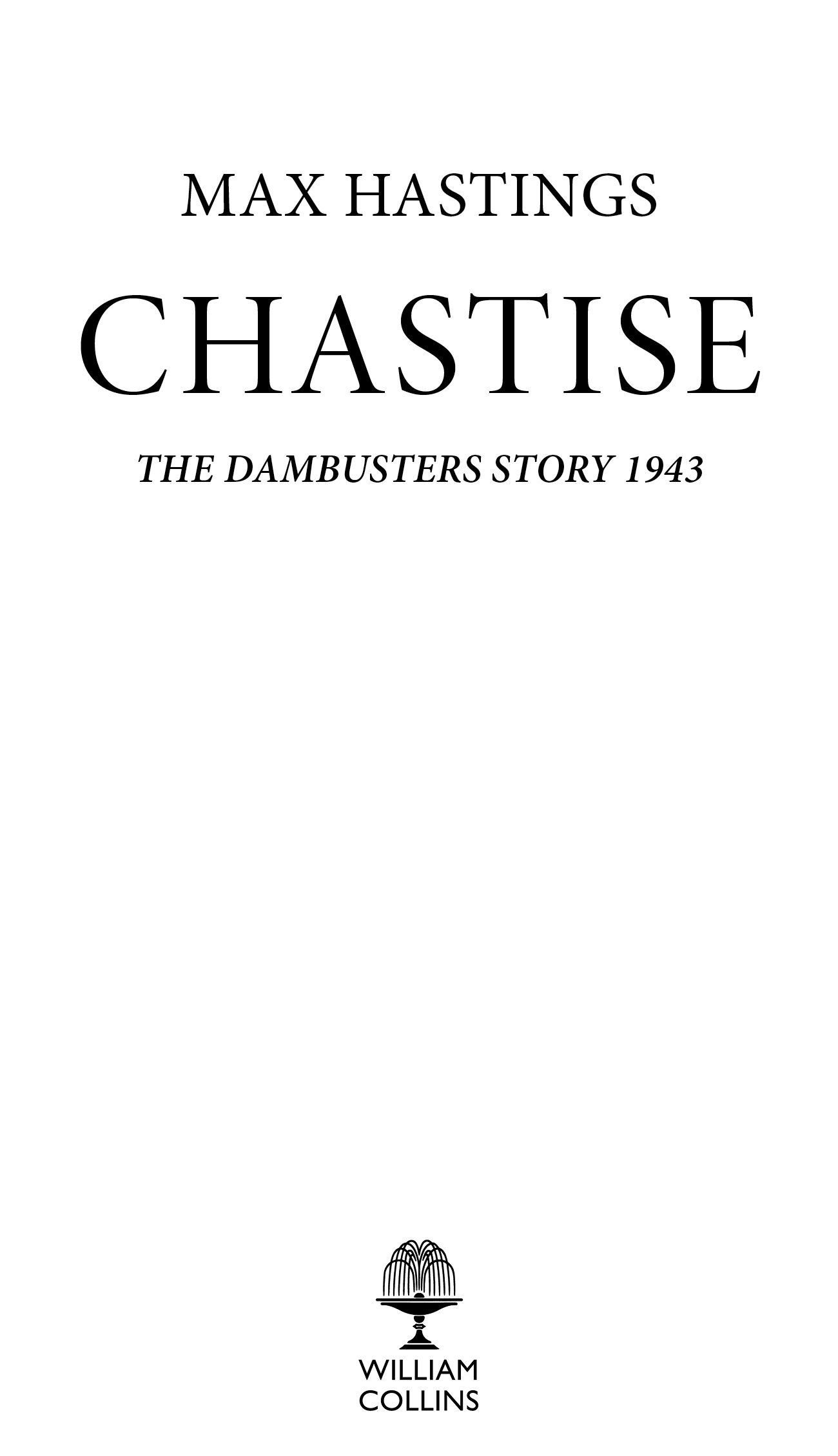
Copyright
William Collins
An imprint of HarperCollinsPublishers
1 London Bridge Street
London SE1 9GF
WilliamCollinsBooks.com
This eBook first published in Great Britain by William Collins in 2019
Copyright © Max Hastings 2019
The author asserts the moral right to be identified as the author of this work
A catalogue record for this book is available from the British Library
Cover photograph © IWM
All rights reserved under International and Pan-American Copyright Conventions. By payment of the required fees, you have been granted the non-exclusive, non-transferable right to access and read the text of this e-book on screen. No part of this text may be reproduced, transmitted, down-loaded, decompiled, reverse engineered, or stored in or introduced into any information storage and retrieval system, in any form or by any means, whether electronic or mechanical, now known or hereinafter invented, without the express written permission of HarperCollins.
Source ISBN: 9780008280529
Ebook Edition © September 2019 ISBN: 9780008280543
Version: 2019-08-01
Dedication
In memory of the aircrew who achieved the almost impossible on the night of 16/17 May 1943; and of the men, women and children on both sides who perished
Contents
1 Cover
2 Title Page
3 Copyright
4 Dedication
5 Contents
6 List of Illustrations
7 Epigraph
8 RAF Ranks and Army Equivalents
9 Abbreviations Used in the Text
10 Introduction
11 Prologue
12 1 Grand Strategy, Great Dams 1 THE BIG PICTURE 2 HARRIS 3 THE ‘PANACEA MERCHANTS’
13 2 The Boffin and His Bombs 1 WALLIS 2 GESTATION 3 FIRST BOUNCES
14 3 Command and Controversy 1 TARGETS 2 GIBSON 3 ‘A DISASTER OF THE FIRST MAGNITUDE’
15 4 Men and Machines 1 FLIERS 2 FLYING
16 5 The Brink of Battle 1 SIXTY FEET 2 ‘NO NEWS THAT WOULD INTEREST YOU FROM HERE’
17 6 Chastise 1 TAKE-OFF 2 GETTING THERE
18 7 At the Dams 1 THE MÖHNE AND THE SORPE 2 THE EDER AND AFTER
19 8 The Möhnekatastrophe 1 ‘A WALL OF WATER, BLACK AS COAL’ 2 ‘CLOSE TO A SUCCESS’
20 9 Heroes 1 GARNERING THE LAURELS 2 SQUANDERING THE SACRIFICE
21 10 Landings 1 ‘GOODNIGHT, EVERYONE’ 2 RECONCILIATIONS
22 Appendix I: 617 Squadron’s Crews Who Flew on the Night of 16/17 May 1943
23 Appendix II: Landmark Dates in the Evolution of Chastise
24 Appendix III: A Chronology of Operation Chastise 16/17 May 1943
25 Picture Section
26 Acknowledgements
27 Notes and References
28 Bibliography
29 Index
30 Also by Max Hastings
31 About the Publisher
LandmarksCoverFrontmatterStart of ContentBackmatter
List of Pagesivvxixiixiiixivxvxviixixxxxxixxiixxiiixxivxxvxxvixxviixxviiixxixxxxxxxixxxiixxxiiixxxivxxxv1234567891011121314151617181920212223242526272829303132333435363738394041424344454647484950515253545556575859606162636465666768697071727374757677787980818284858687888990919293949596979899100101102103104105106107108109110111112113114115116117118119120121122123124125126127128129130131132133134135136137138139140141142143144145146147148149150151152153154155156157158159160161162163164165166167168169170171172173174175178179180181182183184185186187188189190191192193194195196197198199200201202203204205206207208209210211212213214215216217218219220221222223224225226227228229230231232233234235236237238239240241242243244245246247248249250251252253254255256257258259260261262263264265266267268269270271272273274275276277278279280281282283284285286287288289290291292293294295296297298299300301302303304305306307308309315316318319320322323324325326327328329330331332333334335336337338339340341342343345346347348349350351352353354355356357358359360361362363364ii
Illustrations
The Möhne, the Eder and the Sorpe.
Barnes and Molly Wallis in 1925. (Estate of Mary Stopes-Roe)
The Wallis home in Effingham, Surrey. (Cambridge University Library/MS Vickers)
Wallis in his study with an assistant. (Cambridge University Library/MS Vickers)
1940 cartoon showing the Wallis-designed Wellington bomber.
The scaled-down model of the Möhne at Nant-y-Gro in Powys, eight minutes after a test explosion in 1942. (The National Archives/AVIA 10/369)
Recording apparatus attached to scale-model dam at Watford. (The National Archives/DSIR 27/43)
Test explosion at Nant-y-Gro. (The National Archives/AVIA 10/369)
Cherwell, Portal, Pound and Churchill watching a display of anti-aircraft gunnery, June 1941. (Imperial War Museum/H 10306)
Air Vice Marshal the Hon. R.A. Cochrane. (Imperial War Museum/CH 14564); Sir Charles Craven. (Cambridge University Library/MS Vickers); Sir Norman Bottomley. (National Portrait Gallery, London/Howard Coster); Arthur Collins; Air Marshal Sir John Linnell. (Imperial War Museum/CM 5259); Gp. Capt. F. W. Winterbotham. (Barry James Gilmore/Fairfax Media/Getty Images)
Air Chief Marshal Sir Arthur Harris. (Imperial War Museum/CH 13020)
Harris with his wife Jill and daughter Jackie. (Leonard McCombe/Picture Post/Getty Images)
Avro Lancaster ED932 (G-George) being flown by Guy Gibson during tests at Reculver. (Imperial War Museum/FLM 2343)
An Upkeep bounces onto the seafront during tests at Reculver. (Imperial War Museum/FLM 2343)
Tests at Reculver. (Imperial War Museum/FLM 2360; FLM 2362; FLM 2363)
Melvin Young in the victorious 1938 Oxford Boat Race crew. (The Times/News Licensing)
Young’s miraculous October 1940 Atlantic rescue. (Trinity College Oxford, with help from Arthur G. Thorning)
Young with his rescuer’s captain. (Trinity College Oxford, with help from Arthur G. Thorning)
Melvin and Priscilla Young. (Trinity College Oxford, with help from Arthur G. Thorning)
John ‘Hoppy’ Hopgood. (Hopgood family)
Hopgood with his sister Marna and his mother. (Hopgood family)
Hopgood with Marna. (Hopgood family)
Aircrew of 106 Squadron. (Imperial War Museum/HU 91941)
Henry Maudslay at Eton. (Maudslay family)
Maudslay as squadron leader. (Lincolnshire County Council Archives)
Guy Gibson and his wife Eve. (Trinity Mirror/Mirrorpix/Alamy)
Gibson in 1944. (Imperial War Museum/CH 13618)
Gibson with Nigger. (Associated Newspapers/Rota/Shutterstock)
Gibson, Spafford, Hutchison, Deering and Taetum at Scampton. (CNP Collection/Alamy)
Bill Astell and his family on a pre-war outing in Derbyshire. (Ray Hepner)
Gibson with Dave Maltby. (CNP Collection/Alamy)
Australian crew members on leave in London after the raid. (Imperial War Museum/CH 9942)
F/Lt. Bill Astell. (Lincolnshire County Council Archives)
F/Lt. Joe McCarthy and his crew. (CNP Collection/Alamy)
P/O John Fraser at his wedding, a week before Chastise. (Cavendish Press)
F/Lt. David Shannon. (Central Press/Hulton Archive/Getty)
F/Lt. Les Munro.
The aircrew who took part in Operation Chastise. (Imperial War Museum/CH 11049)
Lancaster taking off from Scampton for Chastise. (Imperial War Museum/CH 18006)
Wreck of a 617 Squadron Lancaster on a Dutch beach. (The National Archives/AIR 20/4367)
Harris and Cochrane at the debriefing of Gibson’s crew. (CNP Collection/Alamy)
WAAF intelligence officer Fay Gillon with survivors of the raid, including Maltby, Munro, Trevor-Roper and Shannon. (Fay Gillon)
King George VI at Scampton, with Gibson and Whitworth. (CNP Collection/Alamy)
Some of the survivors of the raid: Sutherland, Kellow, O’Brien, Hobday, Johnson, Knight, Grayston.
Fred Tees, sole survivor of C-Charlie’s crash. (Tees family)
Letter from Gibson to Tees’s mother, informing her that her son is missing in action. (Tees family)
Flooding in Neheim after the raid. (Werner Buehner)
Victims of the flood in Fröndenberg.
Women attempting to salvage household goods after the Möhnekatastrophe.
Albert Speer assessing the damage at the Möhne. (akg-images/Alamy)
Reconstruction work on the Möhne. (Werner Buehner)
Harris with his wife and daughter after the war. (Imperial War Museum)
Barnes Wallis at Teddington during the filming of The Dam Busters. (SWNS)
Wallis with Michael Redgrave, who played him in The Dam Busters. (Pictorial Press Ltd/Alamy)
Epigraph
Boffin/bofin/n.chiefly Br. informal, a scientific expert; esp. one involved in technological research [origin unknown]
Longman’s Dictionary of the English Language
‘It is proposed to use this weapon … against a large dam in Germany which, if breached, will have serious consequences in the neighbouring industrial area … The operation … will not, it is thought, prove particularly dangerous, but it will undoubtedly require skilled crews … Some training will no doubt be necessary.’
Air Vice-Marshal Robert Oxland, Bomber Command HQ, to Air Vice-Marshal Ralph Cochrane, AOC 5 Group, on 17 March 1943
‘One thing,’ said Dim, ‘if we do go and attack … one of us might possibly get a posthumous VC.’
‘Who wants that?’ said Taffy.
‘Not me,’ said one of the boys. ‘All I want is a Peace and Victory Medal.’
Most of us agreed.
Guy Gibson, Enemy Coast Ahead
After Hollywood mogul Daryl Zanuck was shown the movie The Dam Busters in 1955, he demanded disbelievingly, ‘Is that a true story?’ Yes, he was told. ‘Then why doesn’t it say so?’
RAF Ranks and Army Equivalents
Marshal of the RAF – Field-Marshal
Air Chief Marshal (ACM) – General
Air Marshal (AM) – Lieutenant-General
Air Vice-Marshal (AVM) – Major-General
Air Commodore (A/C) – Brigadier
Group-Captain (Gp. Capt.) – Colonel
Wing-Commander (W/Cdr.) – Lieutenant-Colonel
Squadron-Leader (S/Ldr.) – Major
Flight-Lieutenant (F/Lt.) – Captain
Flying Officer (F/O) – Lieutenant
Pilot Officer (P/O) – Subaltern
Flight-Sergeant (F/Sgt.) – Warrant Officer
Sergeant (Sgt.) – Sergeant
Corporal (Cpl.) – Corporal
Leading Aircraftman (LAC) – Lance-Corporal
Aircraftman (AC) – Private
Air Officer Commanding (AOC)
Ranks attributed to personnel mentioned in the text are those held at the time of incidents or conversations described.
Abbreviations Used in the Text
AOC – Air Officer Commanding
ATS – Auxiliary Territorial Service; women’s branch of the army
CAS – Chief of the Air Staff; head of the RAF
C-in-C – Commander-in-Chief
CO – Squadron commanding officer
Gee – Electronic navigation aid, detecting a grid of radio signals transmitted from the UK, fitted to all Bomber Command aircraft but jammed by the Germans over continental Europe
HCU – Heavy Conversion Unit
IFF – Identification Friend or Foe: electronic radar-pulse identification device fitted to all British aircraft
MAP – Ministry of Aircraft Production
MEW – Ministry of Economic Warfare
OTU – Operational Training Unit
RAAF – Royal Australian Air Force
RAFVR – Royal Air Force Volunteer Reserve
RCAF – Royal Canadian Air Force
RNZAF – Royal New Zealand Air Force
SASO – Senior Air Staff Officer; comparable to an army or divisional commander’s chief of staff
USAAF – United States Army Air Force
WAAF – Women’s Auxiliary Air Force; thus a woman serving at an RAF station would be described as a ‘Waaf’
w/op – Wireless-operator
Narrative of operations uses a twenty-four-hour clock, while the twelve-hour civilian clock is used for other timings.
Bomber Command in February 1943 comprised around two thousand aircraft including trainers – the number varied daily, and significantly fewer were immediately serviceable – of which six hundred were ‘heavies’. Each of seven operational Groups was commanded by an air vice-marshal, and contained variously five to ten squadrons. A squadron was composed of eighteen to twenty-four aircraft, confusingly led by a wing-commander, and subdivided into two or three flights, each commanded by a squadron-leader.
Introduction
There were dams; a dog with an embarrassing name; a movie; a march composed by Eric Coates. These memories of Operation Chastise, the ‘bouncing bomb’ attack which burst open north-western Germany’s Möhne and Eder reservoirs on the night of 16/17 May 1943, cling to the consciousness of millions of people of all ages, both sexes and many nations, who may know little else about the Second World War. Wing-Commander Guy Gibson’s biographer Richard Morris has written: ‘The story of 617 Squadron’s breaching of the dams has joined that group of historically-based tales – like King Arthur, or Robin Hood – which defy all efforts at scholarly revision.’
Much that we think we know is wrong. Those of us who read Paul Brickhill’s 1951 book, then watched its 1955 screen progeny, the most popular British war film of all time, should blush to remember that we embraced The Dam Busters with special enthusiasm because the raid seemed victimless, save for the fifty-three dead among the gallant young men who carried it out. In truth, however, something approaching 1,400 people – almost all civilians and more than half French, Polish, Russian and Ukrainian mostly female slaves of Hitler – perished in the Möhnekatastrophe, as modern Germans call it; more than in any previous RAF attack on the Reich. That tragic outcome deserves emphasis, alongside our awe at 617 Squadron’s achievement. It is fascinating that Guy Gibson afterwards reflected uneasily about this, as his superiors never did, writing in 1944: ‘The fact that people … might drown had not occurred to us. But we hoped that the dam wardens would warn those living below in time, even if they were Germans. No one likes mass slaughter and we did not like being the authors of it. Besides, it brought us in line with Himmler and his boys.’
This book represents an emotional journey from my own childhood; from the day when, at boarding school, I first thrilled to Richard Todd’s portrayal of the twenty-four-year-old Gibson, who led 617 Squadron on that fateful May night. Many legendary feats of courage have been performed by warriors who clung to some bleeding piece of earth: the Three Hundred at Thermopylae; Horatius on the bridge before Rome; the Guards’ defence of Hougoumont at Waterloo; Joshua Lawrence Chamberlain’s 20th Maine on Little Round Top at Gettysburg; C Company of the 24th Foot holding Rorke’s Drift.
By contrast, the deed attempted in May 1943 by 130 British, Canadian, and Australian airmen, together with a single American and two New Zealanders, required qualities of a different order. Almost all were of an age with modern gap-year adolescents, or students at university. They embarked in cold blood on a mission that many recognised was likely to kill them, and that would require exceptional courage, skill and luck to succeed. They lifted their big, clumsy bombers from the tranquillity of a summer evening in the midst of the Lincolnshire countryside, barely four decades after the Wright brothers initiated heavier-than-air flight. For two and a half hours they raced through the moonlit sky towards Germany, at a height that made power cables as deadly a menace as anti-aircraft fire. They then attacked Hitler’s dams, flying straight and level at 220 mph, much lower than the treetops and less than a cricket pitch’s length from the lakes below, to unleash revolutionary four-and-a-half-ton weapons created by the brilliance and persistence of Barnes Wallis, a largely self-taught engineer. Half of 617’s aircraft which got as far as Germany failed to return, but two of the biggest man-made structures in the world collapsed into mud and rubble, releasing hundreds of millions of tons of water upon the Reich.
The Allied bomber offensive has become one of the most controversial aspects of the Second World War. Some critics, not all of them German or Japanese, denounce the Western Allied assaults upon cities and their inhabitants as a war crime. The 1945 fire-bombing campaign by American B-29 Superfortresses killed far more people in Tokyo and other Japanese cities than did the atomic bombs later dropped on Hiroshima and Nagasaki. The concept of air bombardment of civilians causes many twenty-first-century people discomfort, indeed repugnance. Contrarily, it is a source of bitterness to some descendants of the RAF’s wartime bomber crews that the public prefers to lavish legacy adulation on the Spitfire and Hurricane pilots of the Battle of Britain – defenders – than on their comrades the attackers, who bombed Germany at the cost of enduring losses much greater than those of Fighter Command. Australian Dave Shannon of 617 Squadron denounced in old age ‘sanctimonious, hypocritical and grovelling criticism about things that were done in a total war’.
Where, in all this, does the saga of the dambusters rightfully belong? The fliers contrived a feat that caused all the world to wonder – the Allied nations with pride, the German people and their leaders with horror and apprehension. Rumours swept the Reich that thirty thousand victims had perished beneath the floods. Though the Lancaster crews were drawn from the RAF’s Bomber Command, the force that nightly rained fire and destruction on Germany’s cities, few even among its critics failed to perceive a nobility about the bravery displayed that night. In the spring of 1943, after nearly four years of austerity, unpalatable food, family separations and spasmodic terrors, only lately ameliorated by a thin gruel of successes, the British people were weary. The dams raid lifted their spirits, revived flagging confidence in their own nation’s powers, as had few events since the desert victory at El Alamein six months earlier. We shall discuss below its effects on the Nazi war machine, which RAF planners aspired to cripple.
I was born at the end of 1945, and thus was five when Paul Brickhill’s best-selling account of Chastise was published, nine when the film was released. Both book and movie made a profound impression. I memorised the names of almost every one of 617’s pilots; assembled and painted plastic models of the Avro Lancasters they flew; became intimately familiar with Enemy Coast Ahead, Gibson’s posthumously published memoir. As an adult, I began to study wars, first as a correspondent and eyewitness in faraway places, then as an author of books. Although my ideas became much more nuanced than those of childhood, I was well served by familiarity with a host of World War II memoirs and histories.
In 1977 I was commissioned to write Bomber Command, a study of the British strategic offensive. In those days, thousands of former aircrew were still alive, together with some commanders. I interviewed at length Air Chief Marshal Sir Arthur Harris, 1942–45 C-in-C of Bomber Command; Air Chief Marshal Sir Ralph Cochrane, ex-AOC of 5 Group, to which 617 Squadron belonged; former senior staff officers including Air Vice-Marshal Syd Bufton, director of bomber operations at the Air Ministry; Marshal of the RAF Lord Elworthy, who served as a pilot, station commander and staff officer at Bomber Command HQ; together with the inventor of the ‘bouncing bomb’, Sir Barnes Wallis, and wartime bombing adviser Lord Zuckerman. Among former 617 aircrew, I met Group-Captain Leonard Cheshire, VC, and Air Vice-Marshal Sir Harold ‘Micky’ Martin. Many of these disagreed profoundly with my conclusions, but their testimony was invaluable.
The RAF’s Battle of Britain Flight flew me as a passenger from Farnborough to Coningsby in its only surviving Avro Lancaster, an unforgettable experience. I explored every crew position, and occupied the rear turret – albeit with most of my long back protruding through its sliding doors – while an accompanying Spitfire and Hurricane made passes, to give me a gunner’s-eye view of an attacking fighter. As a war correspondent I saw more than a few aircraft shot down, and have myself dangled from a parachute, though happily not as a ‘bailed out’ airman. In 1994 I spent an airsick afternoon in the rear seat of an RAF Tornado of the latterday 617 Squadron, over Lincolnshire and the North Sea.
All these memories have informed my thoughts and stirred my imagination as I wrote this book. Among many previous accounts of Chastise, the 1982 groundbreaker was that of John Sweetman, who performed prodigies of research to transform and much enhance the picture created by Paul Brickhill. I cherish unstinting admiration for Richard Morris, and especially for his 1994 biography of Guy Gibson, which contributed much to Gibson’s portrait in my own 2005 book Warriors. In Germany, Helmuth Euler has devoted most of his life to interviewing survivors of the breaching of the dams, as well as assembling images and documentation: I have made a free translation from some of his witnesses’ testimony, in pursuit of colloquial English. In 2012, James Holland published an exhaustive new account of the raid.
Robert Owen, official historian of the 617 Squadron Association, possesses encyclopaedic knowledge, which he is generous enough to lend to other writers. Rob was a perfect companion on my 2018 visit to the dams, which enabled me to understand on the spot much that was previously obscure about the hazards facing the attackers. Charles Foster has recently published an invaluable new work of reference, The Complete Dambusters, providing images and details of all 133 aircrew who flew the raid. For my own narrative I have drawn heavily upon the researches of all the above writers. Richard Morris and Rob Owen, especially, have saved me from egregious errors. As in all my books, I seek to emphasise the human dimension and the ‘big picture’, making no attempt to match the admirable technical detail about Wallis’s weapons, of which Sweetman and Holland display mastery.
An enigma overhangs the personalities of the men of 617 Squadron. Almost all were very young when they attacked the dams, and few survived the war. Records detail what they did; there is much less evidence, however, about what sort of people they were. With the notable exception of Gibson, their stories rely heavily upon adolescent correspondence and anecdotes. They were unformed in almost everything save having been trained for flight and devastation: many still thought it the best joke in the world to pull off a man’s trousers after dinner. In describing them, an author cannot escape surmise and speculation. Much reported dialogue, especially relating to the hours of action over the dams, relies upon later personal memories, probably more reliable in spirit than wording. On such a matter as – for instance – the sporadic affair between Gibson and WAAF nurse Margaret North, historians depend on North’s unsupported oral testimony to Richard Morris.


